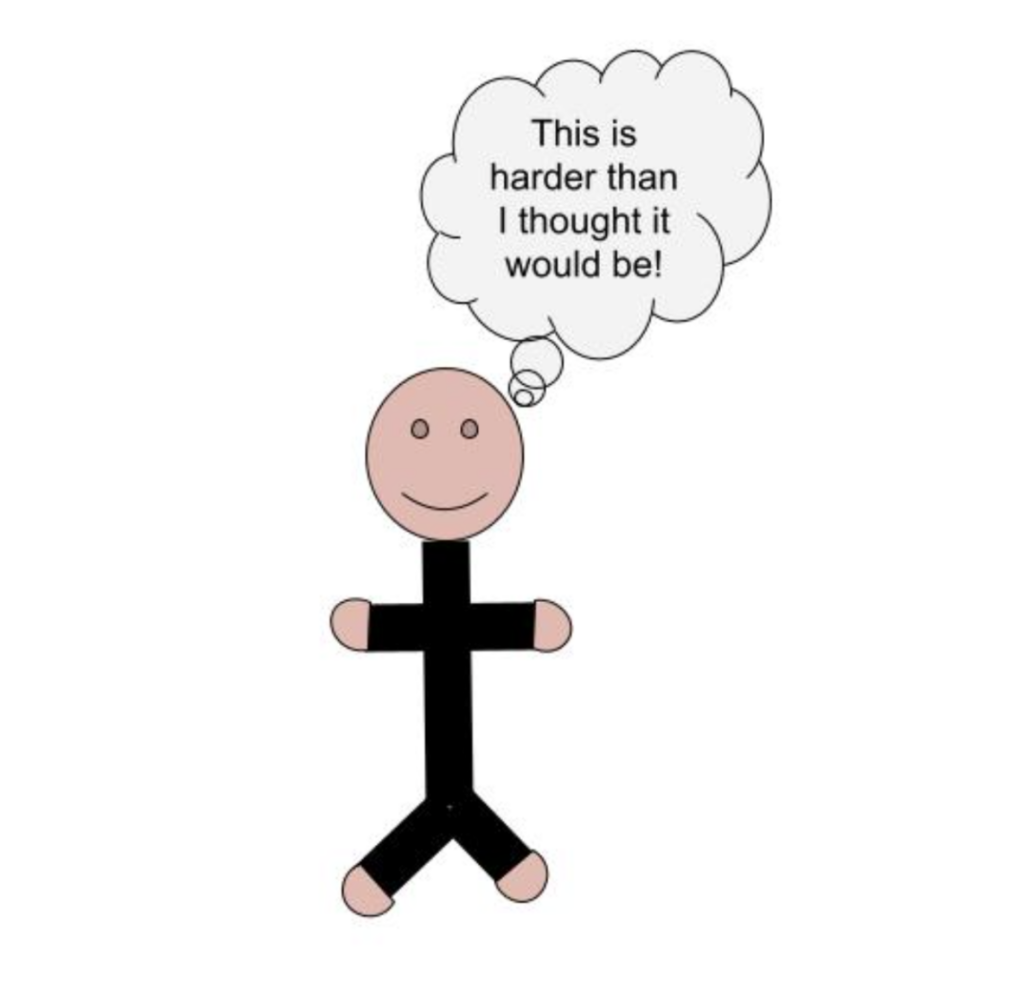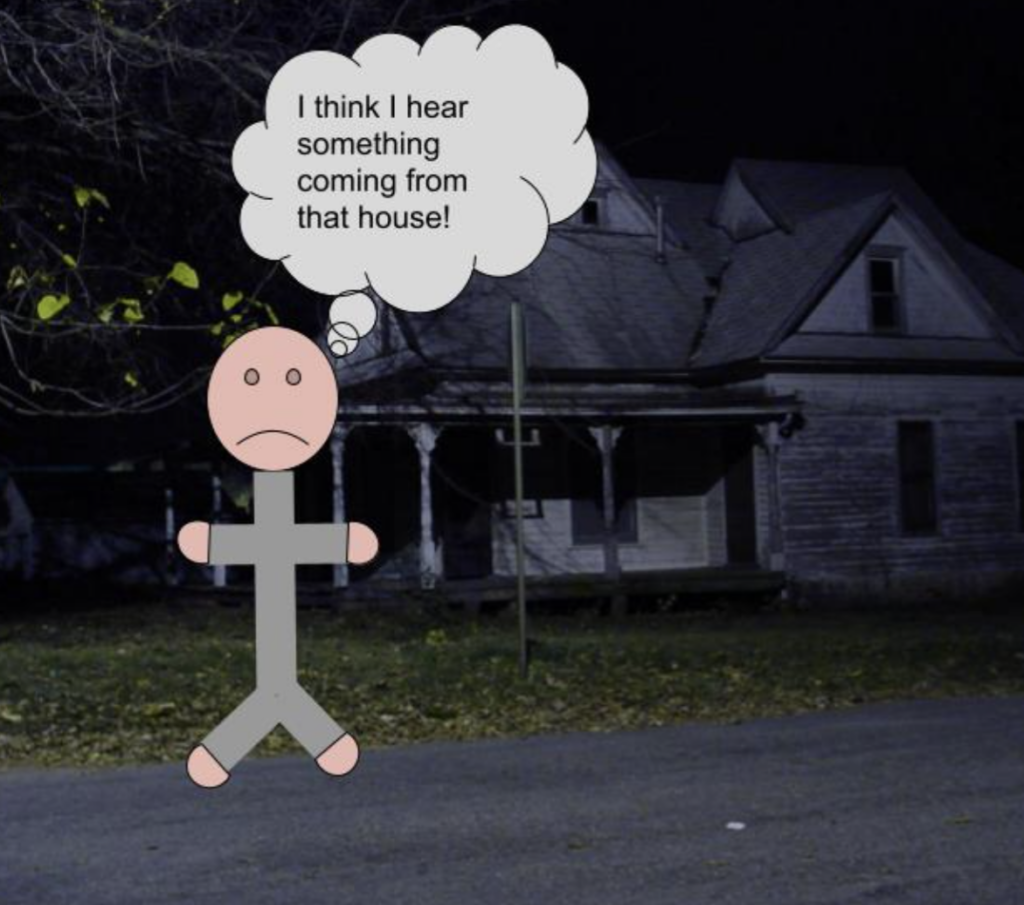Student Outcome: Communicate Ideas and Information – Use a combination of visual, print, and other media to effectively inform and engage the audience.
Student Activity: Develop a radio mystery show presented in a multimedia format that incorporates visual, audio, and interactive media elements.
Task: Students will create an image to represent a page in their book. The chosen image must align with the theme of their mystery story and adhere to licensing requirements.
Tool: Google Drawing
Process: For this process I wanted to keep with my mystery theme. I also wanted to attempt to build my own graphic from scratch as well as use a graphic from a licenced source and layer them together.
This was the first graphic that I created. It is very basic but was simple to create in Google drawing with a call out bubble for dialogue.

This was my second attempt where I inserted the background the student found for their first assignment from free licencing https://morguefile.com/p/8794 . I also changed the mouth shape and the words to show fear.

Text and Picture Comprehension – I combined text and picture comprehension to stimulate higher-order thinking (Schnotz, 2022). The use of a callout highlights key aspects of the image, drawing the reader’s attention to the background’s significance. By integrating visual elements with text, this approach enhances both reading and visual comprehension.
Context Influences the Use of Visuals – Clark and Lyons emphasize that visuals should be purposefully designed to support the learning environment and instructional goals rather than being added arbitrarily. In this case, the choice to minimize text and prioritize visuals and audio aligns with the nature of an interactive storybook, where immersion and engagement are key. Because the goal is to create a mystery-driven experience, the visuals and sound effects work together to evoke suspense, guiding the reader’s emotional and cognitive engagement. This reinforces the idea that graphics must be considered in relation to the broader instructional context, ensuring they complement rather than distract from the intended learning experience (2010, p. 24).
References
Clark, R. C. & Lyons, C. (2010). Three views of instructional visuals. In R. Taff (Ed.), Graphics for learning: Proven guidelines for planning, designing and evaluating visuals in training materials (2nd ed., pp. 15–28). Pfeiffer.
Schnotz, W. (2022). Integrated Model of Text and Picture Comprehension. In R.E. Mayer & L. Fiorella (Eds.), The Cambridge Handbook of Multimedia Learning (pp. 82-99). Cambridge University Press.

Hi Hannah, I love your choice of student activity: it’s general yet specific enough to encourage some good creative thinking and student output. It also spans disparate generations of multimedia: from the radio drama to the podcast, and the age-old horror/mystery genres to the graphic novel. Nice work incorporating the principles from this week’s readings; I think the ones you’ve highlighted could be communicated to a range of students without much difficulty. And thanks for introducing me to Google drawing — this is a platform I have yet to explore!
Cheers,
Jeremy
Though you’ve had to push through your first construction of a graphic from scratch, you’ve created something that all learners will understand as representing a person.
As you approach curriculum development with media you’ll become good at considering what graphics you could produce on your own in a reasonable amount of time and what graphics you’re better off searching for an existing shareable example. In my first post-secondary job we had a graphic artist, but it was important for us to establish a baseline of supporting skills. Typically I would plug at a graphic for 20-30 minutes but bail if it became clear I wasn’t producing what was needed.